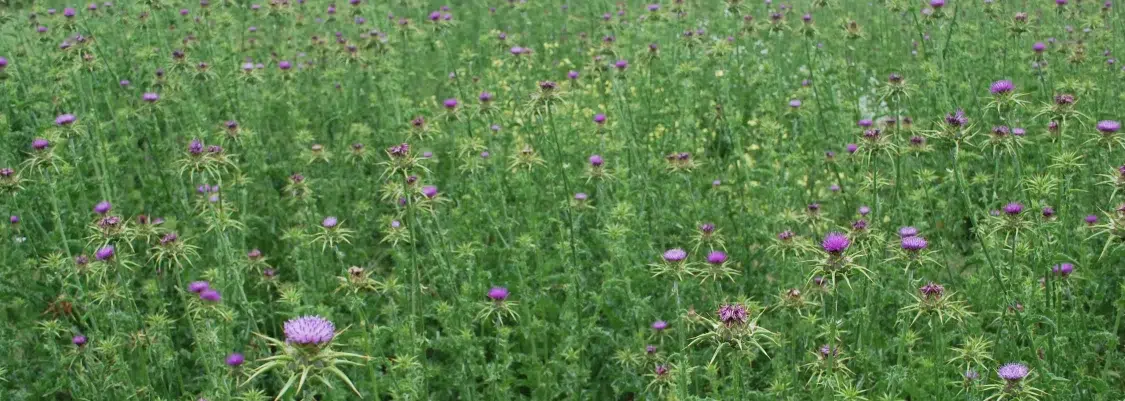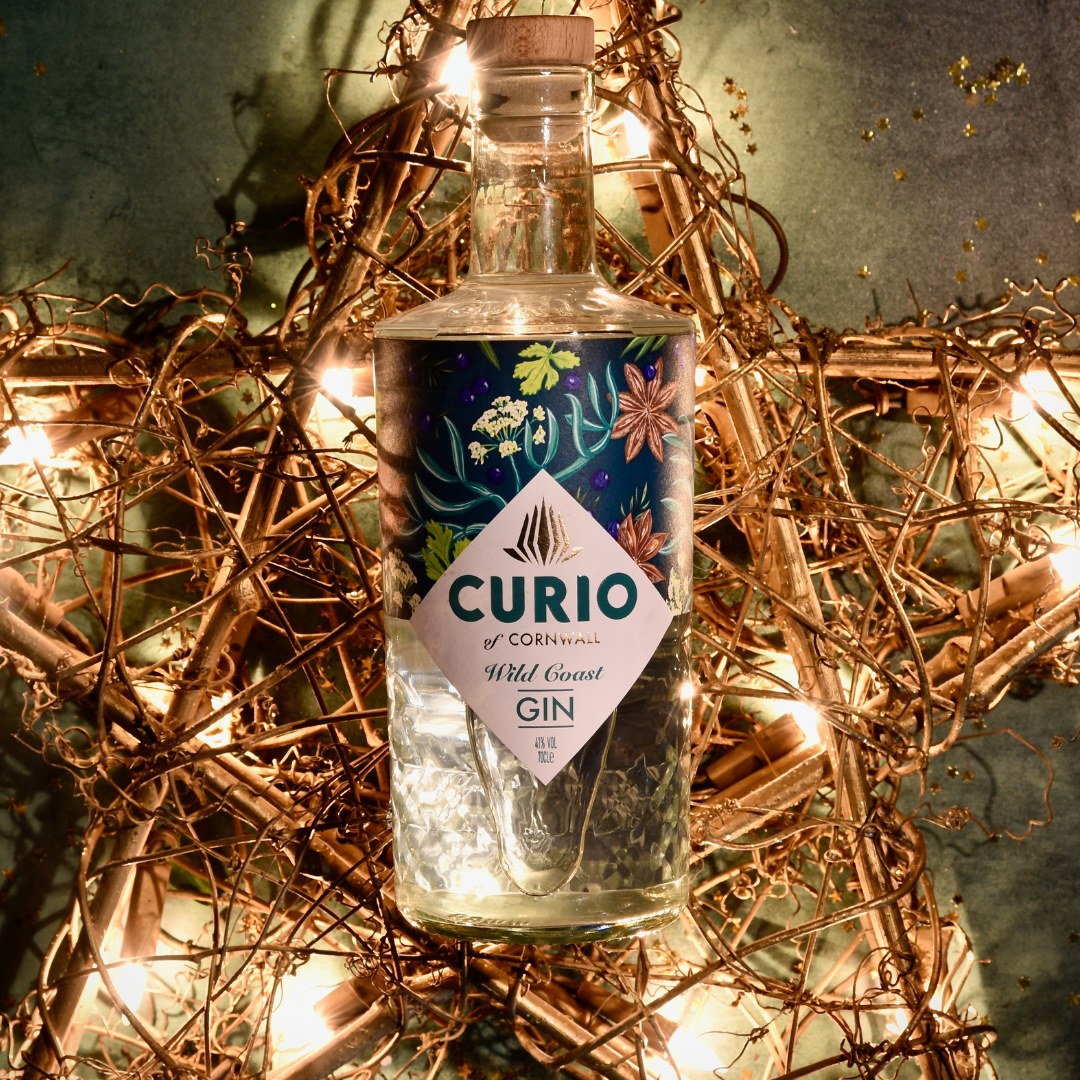
Milk Thistle wild plant Gin Botanical

Milk Thistle Wild Plant Gin Botanical
Milk thistle, scientifically known as Silybum marianum, is a wild plant that has been used for centuries for its medicinal properties. It is native to the Mediterranean region but is now found worldwide. In recent years, milk thistle has also gained popularity in the world of mixology, particularly in the production of gin botanicals. This essay will explore the history, health benefits, and culinary uses of milk thistle as a gin botanical.
Historically, milk thistle has been used for its liver-protective properties. The active compound in milk thistle, silymarin, has been studied for its ability to promote liver health and detoxification. In traditional medicine, milk thistle was used to treat liver disorders and promote bile production. Today, milk thistle supplements are commonly used to support liver function and aid in the detoxification process.

In the culinary world, milk thistle has been gaining popularity as a unique botanical in gin production. The seeds of milk thistle are often used to infuse gin with a slightly bitter and earthy flavor profile. This botanical adds complexity to gin recipes and can enhance the overall drinking experience. Additionally, the vibrant purple flowers of milk thistle can be used as a garnish in cocktails or infused into syrups for a visually striking presentation.
Milk thistle has also been utilized in the creation of non-alcoholic beverages, such as herbal teas and tonics. The health benefits of milk thistle can be harnessed in these beverages to support overall well-being. The anti-inflammatory and antioxidant properties of milk thistle make it a valuable addition to any diet.
In conclusion, milk thistle is a versatile plant with a long history of medicinal and culinary use. As a gin botanical, milk thistle adds complexity and depth to cocktails, while also providing health benefits. Whether used in traditional herbal remedies or modern mixology, milk thistle is sure to continue to be a valuable ingredient for generations to come.

Milk Thistle wild plant Grow an d Harvest for Botanical
Milk thistle, also known as Silybum marianum, is a wild plant that is widely used for its medicinal properties. It is native to the Mediterranean region, but can now be found growing in various parts of the world. Milk thistle is known for its distinct purple flowers and spiky leaves, which contain a potent compound called silymarin. This compound is believed to have powerful antioxidant and anti-inflammatory properties, making milk thistle a popular choice for natural remedies.
To grow and harvest milk thistle, one must first find a suitable location with well-drained soil and full sunlight. Milk thistle seeds can be either purchased from a reputable supplier or collected from mature plants. The seeds should be planted in spring, either directly into the soil or in pots for later transplanting. They need to be spaced out evenly and watered regularly to ensure proper germination. Once the plants start to grow, they should be watered sparingly to prevent root rot.

Milk thistle plants typically take about two years to mature and produce flowers. When the flowers turn to seed heads, they can be harvested by cutting the entire plant at the base. The seed heads can then be dried in a cool, dark place for a few weeks until they are ready to be processed. To extract the seeds, the dried seed heads can be crushed and sifted to separate the seeds from the chaff. The seeds can then be stored in airtight containers in a cool, dark place for future use.
In addition to its medicinal properties, milk thistle is also a valuable plant for wildlife. Its flowers attract bees and other pollinators, while its spiky leaves provide shelter for small animals. Milk thistle can be a great addition to a botanical garden or natural habitat, as it requires minimal care and can thrive in various soil conditions. It is important to note, however, that milk thistle can become invasive in some areas, so it is recommended to monitor its growth and prevent it from spreading uncontrollably.
In conclusion, milk thistle is a versatile and beneficial plant that can be grown and harvested for both medicinal and botanical purposes. Its unique appearance and powerful properties make it a valuable addition to any garden or natural landscape. By following the proper growing and harvesting techniques, one can enjoy the benefits of milk thistle while also supporting local wildlife and biodiversity. So why not consider adding milk thistle to your garden and experience its many wonders for yourself?

Milk Thistle as Botanical in Gin Distillery
Milk thistle, also known by its scientific name Silybum marianum, is a flowering plant native to the Mediterranean region. It has been used for centuries as a natural remedy for various ailments due to its medicinal properties. In recent years, milk thistle has also found its way into the world of gin distillation as a botanical ingredient, adding a unique flavor profile and potential health benefits to the spirit.
One of the main reasons milk thistle is used as a botanical in gin distilleries is its distinct and pleasant taste. The plant has a slightly bitter and earthy flavor, which pairs well with the fruity and floral notes commonly found in gin. When added to the distillation process, milk thistle can contribute to a more complex and layered flavor profile in the final product, giving gin connoisseurs a new and exciting option to explore.

In addition to its flavor-enhancing properties, milk thistle is also believed to have certain health benefits that make it an attractive botanical choice for gin distillers. The plant is rich in antioxidants and anti-inflammatory compounds, which are thought to help protect the liver and aid in detoxification. By incorporating milk thistle into their gin recipes, distilleries can offer consumers a drink that not only tantalizes the taste buds but also provides potential health benefits.

Furthermore, milk thistle is a sustainable and environmentally friendly botanical option for gin distilleries. The plant is known for its resilience and ability to thrive in a variety of climates, making it a relatively easy and cost-effective ingredient to source. By using milk thistle in their gin recipes, distilleries can support sustainable farming practices and reduce their carbon footprint, all while offering a unique and high-quality product to consumers.
Overall, milk thistle has proven to be a versatile and valuable botanical in the world of gin distillation. Its distinct flavor profile, potential health benefits, and sustainable sourcing make it an attractive option for distilleries looking to set their products apart from the competition. As the demand for craft gin continues to grow, milk thistle is likely to become an increasingly popular ingredient in the industry, further solidifying its place as a botanical of choice for gin enthusiasts around the world.

Glaswegin Original Gin 70cl

Our original London Dry Gin bottled at 41.1% abv.
Our multi-award winning London Dry Gin inspired by Glasgow; this wonderful city we call home. Crowned Scotland’s Best London Dry Gin at the 2021 World Gin Awards.
Our bespoke recipe and unique taste come as a result of blending eight globally sourced botanicals. Milk thistle, Italian juniper, coriander, angelica, orange flower, bay leaf, chamomile and pink peppercorn combine to create a characterful Glaswegian gin that you can enjoy glass after glass.
Tasting notes: Strong juniper and lime notes provide freshness with delicate orange flower notes for complexity. Locally sourced milk thistle and pink peppercorns round out the spirit for a finish so smooth that can be drunk with or without garnish.
G&T serving suggestion: Premium tonic, slices of green apple and a sprig of mint.
ABV / 41.1%
70 cl
Glas we Gin
Milk Thistle
INVERCLYDE GIN OLD THOM – BATCH 3

Our Old Thom is here to stay after successfully winning our first ever Tidal Series. Named after the infamous Inverclyde loch, our blend of Elderflower, Milk Thistle, Cassia and Orange Peel combine beautifully. The infusion is then enhanced by the tart flavour of brambles found across our coastlines and subtly sweetened with caramel notes of Inverclyde’s own golden syrup.
ALC 40% VOL | 70cl
Inverclyde Gin
Milk Thistle
How We Make Brighton Gin
If you happen to visit Brighton Gin on a distilling day you’ll be met by an aromatic curtain of citrus as Paul, our superstar lead distiller, peels dozens of fresh oranges and limes that bestow a lively zest to both our Pavilion and Seaside gins. However, these are just two of the all-natural ingredients that go into our award-winning Brighton Gin – read on to find out the other ingredients and exactly how we create our handmade gin.
Brighton Gin starts with a base spirit produced from 100% organic wheat which is then flavoured with a mix of botanicals, the primary one being juniper berries which are actually seed cones from a coniferous tree. Juniper is the main gin ingredient for flavour and imparts the characteristic pine note that makes gin taste like nothing else.
Then orange and lime peel are added, plus coriander seeds for their subtle lemon and spice, angelica, which imbues earthiness and acts as a flavour fixative by binding volatile aromas to prevent them from evaporating, and finally, milk thistle, foraged from the South Downs, used in natural medicine to protect the liver.








